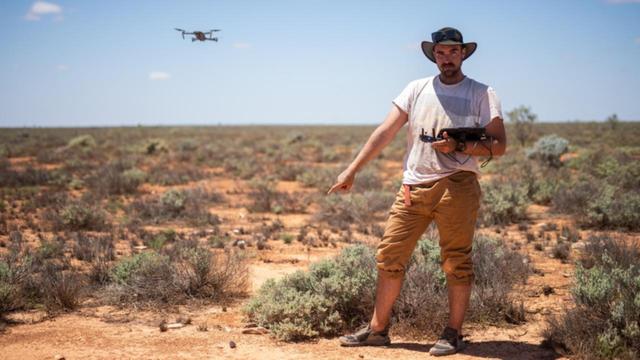Thousands of small meteorites are thought to hit Earth’s surface each year, but for every impact witnessed almost 800 space rock chunks land in oceans or remote landscapes and go unnoticed.
A young Australian researcher last year came up with what he reckoned to be a sound method for locating fallen meteors more efficiently, accurately and often.
Putting his money where his mouth was, Curtain University graduate student Seamus Anderson went out and pinpointed the exact spot of a freshly fallen sample on WA’s vast Nullarbor Plain in April.

